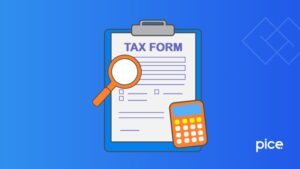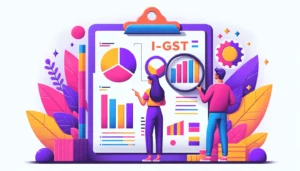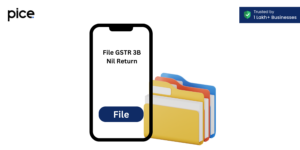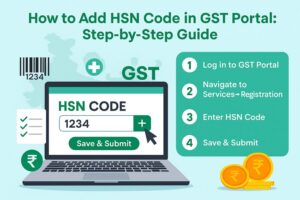An Overview of GSTR 9 Annual Return Format
- 28 Mar 25
- 12 mins

An Overview of GSTR 9 Annual Return Format
Key Takeaways
- GSTR-9 is an annual GST return consolidating supply details.
- Due date is 31st December following the financial year.
- Mandatory if annual turnover exceeds ₹2 crore.
- Late fees range from ₹50–₹200/day based on turnover.
- Accurate ITC reconciliation ensures GST compliance.
The GSTR-9 annual return format entails supplies received and made during a financial year. Registered and normal taxpayers need to file this return annually, mentioning CGST, SGST and IGST (Central Goods and Services Tax, State Goods and Services Tax and Integrated Goods and Services Tax) details for the financial year on the GST portal.
In addition, you need to incorporate the turnover details followed by the annual audit details of financial statements. Learn in detail about the due date and the process of filling out this annual return form here.
What Is the GSTR-9 Annual Return?
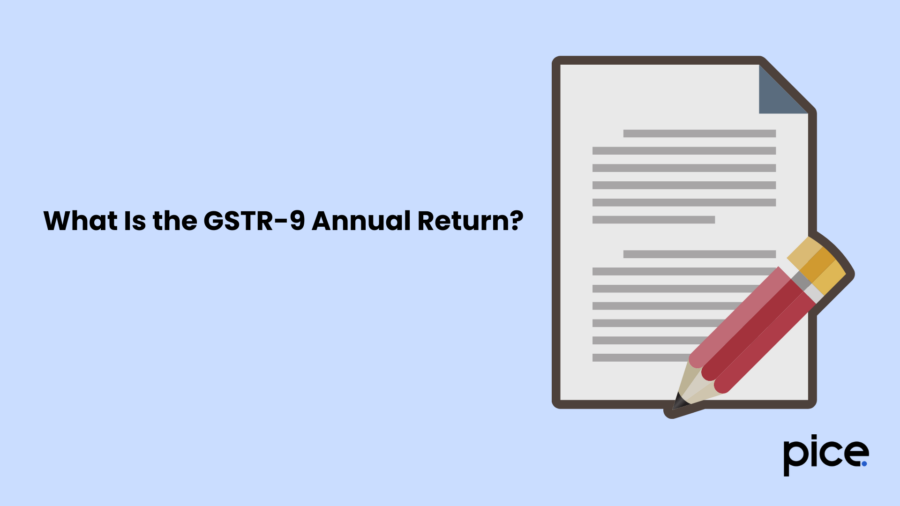
GSTR-9 is the annual tax return form for GST-registered taxpayers, including details of outward and inward supplies. It additionally includes details pertaining to cess and HSN codes under each GST head such as CGST, SGST and IGST.
It is the consolidated form for monthly GST returns and quarterly returns such as GSTR-1 summary, GSTR-2A, GSTR-2B and GSTR-3B for a specific financial year. This form aids in data reconciliation ensuring transparency between suppliers and the tax authorities.
GSTR-9 Types
The table below illustrates the types of GSTR-9:
| GSTR-9 | GSTR-9A | GSTR-9B | GSTR-9C |
| If your annual turnover limit is ₹2 crore during a financial year and you file GSTR-1 and GSTR-3B then you need to file GSTR-9. | Composition taxable persons or composition scheme participants (under the composition scheme or composition levy scheme) were required to file this form till 2018-19. 2019-20 onwards GSTR-4 has replaced this form. | E-commerce operators collecting TCS (Tax Collected at Source) have to file this return form along with GSTR-8 each month. | This is the annual reconciliation statement for taxpayers with aggregate turnover exceeding ₹5 crore. |
What Is the GSTR-9 Turnover Limit?
Businesses with an annual return limit of up to ₹2 crore turnover can file GSTR-9 annual return every year as an option. The GST threshold turnover limit is notified by the tax authorities every year.
What Is the GSTR 9 Due Date?
For a specific financial year, the last date for filing GSTR-9 returns is 31st December of the following financial year. Ensure you file returns within the due date to avoid paying penalties and interest.
GSTR-9 Contents and Format
The GSTR-9 Form has 6 parts and 19 sections wherein you need to fill in each part by referring to returns you filed earlier. As a result, the necessary details are available on the books of accounts. Here are the major segregations:
● The annual sales required in GSTR-9 are segregated into taxable and non-taxable categories.
● For purchases, the annual value of inward supplies followed by input tax credit (ITC) is available to help you optimise ITC.
● The purchases are further categorised into inputs, capital goods and input services.
● GSTR-9 needs to include ITC reversed due to ineligibility.
GSTR 9 Filing Steps
Here are the steps to summarise and fill GSTR-9:
Step 1: Complete filing GSTR-1 and GSTR-3B for the relevant financial year.
Step 2: Ensure you complete ITC reconciliation and sales reconciliation for the entire financial year.
Step 3: You need to communicate with vendors and customers for gaps in reconciliation detected.
Step 4: Use the government’s offline tool or any other cloud software to auto-populate data.
Step 5: If there are any short-payment of tax or excess ITC claims in the necessary financial year, pay the same using DRC-03.
Step 6: Complete filing GSTR-9 using the unified portal of GST.
Late Fee and Penalty for Not Filing GSTR-9
The following table highlights the late fee per day and the maximum limit for different categories of taxpayers:
| Turnover Limit | Late Fee Per Day | Maximum Late Fee |
| Not Exceeding ₹5 Crore | ₹50 including ₹25 for CGST and SGST each | 0.04% of turnover in State or Union Territory including 0.02% of CGST and SGST each |
| Exceeding ₹5 Crore and less than ₹20 Crore | ₹100 including ₹50 each for CGST and SGST | 0.04% of turnover in state and Union Territories wherein CGST and SGST are 0.02% each |
| Exceeding ₹20 Crore | ₹200 including ₹100 each for CGST and SGST | 0.50% of turnover in Union Territory or State wherein 0.25% each is for CGST and SGST |
Who Should File GSTR-9?
Here is the list of entities that need to file GSTR-9:
● You need to be a registered taxpayer under the GST system with a 15-digit GSTIN based on your PAN number.
● Individuals with aggregate turnover more than ₹20 lakh.
● GSTR-9 system filing excludes individuals with Unique Identification Numbers (UIN) and non-resident taxpayers.
Note: Capture all relevant transactions at the invoice level including intra-state, inter-state, B2B and B2C transactions. In addition, it excludes exempted items, stock transfers and non-GST supplies liable.
Important Things to File in GSTR-9 Annual Return
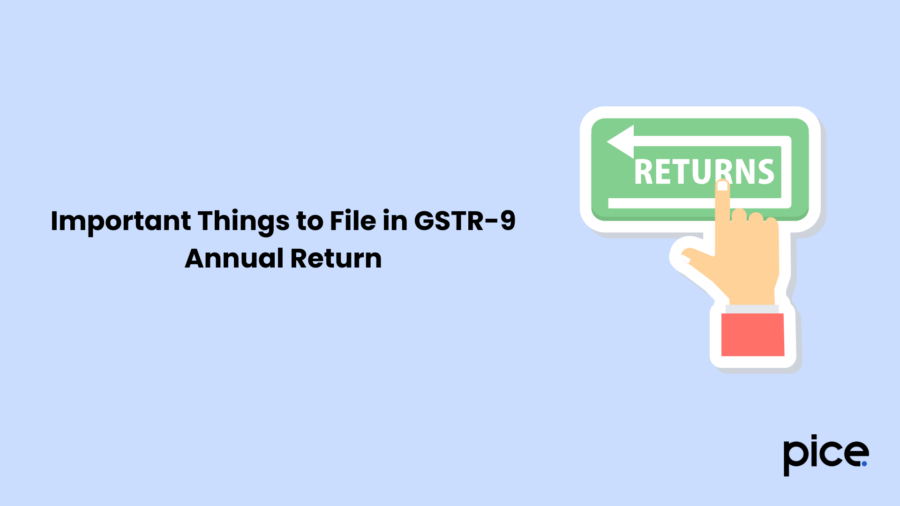
Here are the things to fill in while filing GSTR-9:
Part-1: Basic Details
The first part requires you to fill in the relevant financial year, GSTIN (Goods and Services Tax Identification Number), legal name and trade name (if different from legal name).
Part 2: Details of Inward and Outward Supplies for a Financial Year
You need to fill in details of advances, sales, purchases, and taxable supplies in Section 4. Enter the values of taxes such as CGST, SGST, IGST and cess value for the below-mentioned factors:
● B2C supplies made to unregistered persons
● B2B supplies made to a registered person
● Zero-rate supplies for exports for which you have paid taxes excluding supplies to SEZ (Special Economic Zone)
● Supply to SEZs on which you paid tax
● Deemed exports
● Advances on which you have paid tax; however have not issued an invoice
● Purchase supplies eligible for tax under the reverse charge mechanism
● The subtotal of all transactions in the above-mentioned categories
● Details of credit notes and debit notes that you issued for transactions in the above-mentioned categories
● Supplies, tax declared and tax reduced through specific amendments
● The subtotal of credit notes, debit notes, supplies, tax declared and tax-reduced
● Supplies and advances eligible for tax in the above-mentioned categories
Enter the details in Section 5 as follows:
● Zero-rated supplies for exports without tax payment
● Supplies made to Special Economic Zone (SEZ) without payment of tax
● Specific supplies for which recipients need to pay reverse charge tax
● Exempt supplies
● Nil-rated supplies (nil return)
● Non-GST supply
● The subtotal of all the above-mentioned components
● Credit and debit notes issued for the above-mentioned transactions
● Supplies declared or reduced through amendments
● The total of credit, debit notes, and supplies reduced and declared through amendments
● The amount of turnover exempted from tax in the above-mentioned categories
● Total turnover amount including the advances
Part-3: ITC Details Declared in Returns Filed for a Financial Year
For the third part, in Section 6, you need to fill in the following details:
● The total ITC amount that you availed using GSTR-3B
● Supplies for purchases made for inputs, input services and capital goods excluding imports, purchases under reverse charge and including services that SEZs receive
● Purchase supplies that you receive from unregistered persons for capital goods, inputs, and input services liable under the reverse charge mechanism, for which you paid taxes and ITC, excluding the above-mentioned supplies.
● The supplies (purchase) you receive from registered persons (regular taxpayers) for capital goods, input services and inputs under reverse charge basis, for which you have paid taxes and ITC, excluding those mentioned above.
● Details of imports including supplies of inputs and capital goods from SEZs
● Imports excluding purchases from SEZs
● If you receive ITC from ISD (Input Service Distributor)
● The ITC amount that you claimed under the CGST Act
● Subtotal of all the components mentioned above
● The difference between the total ITC and the subtotal
● Transition credit mentioned in TRAN-I and TRAN-II
● Additional ITC that you availed; however not mentioned in the relevant column
● The subtotal of the components after the previous subtotal
● Total ITC that you availed for the above-mentioned components
For Section 7, here are the details that you need to fill in:
● Non-payment of consideration for reversal of credit mentioned in ITC
● ITC distribution by ISD under Rule 39
● Input Tax Credit for inputs or input services and reversal under Rule 42
● ITC with respect to capital goods and reversal under Rule 43
● Blocked credits under GST under Section 17(5)
● Credit reversal mentioned in TRAN-I and TRAN-II
● Specifications of additional reversals
● Total ITC reversed in the above-mentioned categories
● Net ITC available for utilisation
For Section 8, you need to fill in the following details:
● ITC paid in GSTR-2A
● The sum of ITC mentioned in other parts
● ITC on supplies excluding imports and inward supplies under reverse charge mechanism. It includes services that you receive from SEZs.
● Differences between ITC given and ITC on sales supplies
● ITC available; however not availed or ineligible
● IGST paid on imported goods including supplies from SEZs
● IGST credits availed on imported goods
● The difference between IGST credit and IGST paid
● ITC available however not availed on imported goods
● The lapsed ITC value for the present financial year
Part-4: Tax Paid as Declared in Returns Filed During the Financial Year
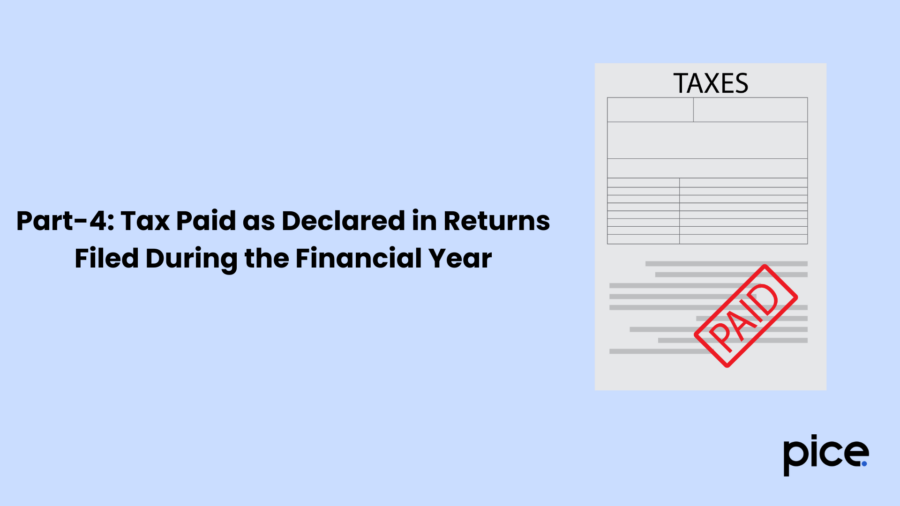
Ensure you fill in the details of tax paid and mentioned in returns filed during the financial year.
Part 5: Particulars of the Transactions of the Earlier Financial Year Declared in Returns of the Current Financial Year
For Section 10, you need to fill in the following details:
● Supplies or tax mentioned or reduced through amendment
● ITC reversal availed during the earlier financial year
● ITC availed for the preceding financial year
In addition, you need to fill in the differential tax payable and paid for the categories as follows:
● The integrated tax value (IGST)
● The central tax value (CGST)
● SGST or UTGST
● Cess amount and
● Interest value
Part 6: Other Information
For Section 15, of this part, you need to fill in the following details:
● The total refund you claimed
● Refunds sanctioned
● Refunds rejected
● Pending refunds
● Total tax demands
● Total taxes paid for total tax demand for tax calculation
● Pending total demands
For Section 16, you need to fill in the details as follows:
● Supplies you receive from composition taxpayers
● Deemed supplies under Section 143
● Goods you sent on an approval basis however not returned
For Sections 17 and 18, you need to mention the HSN-wise details for purchases and sales followed by tax information and HSN codes.
For Section 19, you need to list the payable and paid late fees associated with central and state taxes.
Conclusion
Form GSTR-9 annual return format requires you to fill in all the necessary sections and details. It helps you provide all the details pertaining to the sales and purchase of supplies including tax details. You need to include IGST, CGST, and SGST/UTGST details while filing your GSTR-9 annual return to ensure compliance with GST regulations and compliance with tax regulations.
The provision for ITC helps you reduce tax liabilities. Timely filing of these details helps you adhere to tax laws in India and contribute to the government's revenue. Ensure you adhere to the annual GST return limit and filing deadline for a complete supply chain solution, vendor delight, accurate vendor payments and vendor management.
💡If you want to streamline your payment and make GST payments via credit or debit card, UPI consider using the PICE App. Explore the PICE App today and take your business to new heights.
 By
By 







